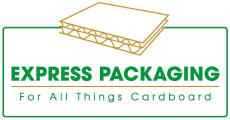To most people outside of the packaging industry a box is simply just a box. Most people understand that they are generally something that is made out of cardboard that you can store or transport various items in. For most people, it is easy to overlook or not be aware of the many intricacies of cardboard boxes, but for individuals and businesses that rely on cardboard boxes to safely store and transport their products and to get them to their consumers, they understand just how important understanding cardboard boxes and packaging can be. For these businesses it is critical to take the time to learn and better understand about the many varying styles of boxes as well as having a thorough understanding of what they need a box to do within their business.
One of the simplest and most effective ways to achieve this as a starting point is by comparing a regular slotted carton (RSC) to a full overlap box. These are two of the most common and widely used styles of boxes being utilised by businesses across Australia and around the world today.
The first point of comparison is in the definition. Within Australia, RSC boxes are a style of box that has four panels on the top and the bottom of the box that meet in the middle. FOL boxes however have four panels on the top and bottom that overlap and extend often to the opposite side of the box.
So What Are the Key Differences?
Both of these styles of boxes sound similar sound similar and in many key ways they in fact are. Both these styles are generally made out of corrugated cardboard which is manufactured from raw paper and they can both come in almost any size and shape imaginable. They are both roughly the same shape as a cube and will also generally require some type of packaging material to keep whatever items are being placed inside from being impacted upon or damaged. They can also differ in the strength of packaging they offer depending on the grade of cardboard that is being utilised.
Regular slotted cartons (RSC) are usually taped in the middle where the panels meet. The full overlap box is usually taped at the edges where the one panel meets the side of the box. Because there are two layers of cardboard on the top and bottom of the overlap box, it can often tend to be stronger than the regular slotted carton.
Because the RSC boxes require usually require less cardboard to make, they tend to be less expensive to manufacture therefor much cheaper for customers to buy. Whilst both boxes can usually be folded flat to transport and store, the regular slotted carton style of boxes will usually require less space in storage than the overlap boxes require. For many businesses, this saving of space can be vitally important to their business.
Both RSC style cartons and Full Flap cartons can easily be custom printed on and both can be manufactured with a huge range of different styles and grades of cardboard and both can be made from brand new Kraft board and also from fully recycled and environmentally friendly cardboard. The biggest single advantage that the overlap style of boxes offer is improved protection. If a business is however utilising boxes that are not going to be subject to rough treatment and that do not need as much protection, or businesses who place a premium on saving space and then it can often make much more sense to turn to the more economical regular slotted carton style of boxes.
This decision is one that businesses need to make every day when they consider their packaging requirements. This makes it critical that businesses seek out an experienced and trustworthy packaging provider that can help guide them through this process. At Express Packaging we have decades of experience in the packaging industry and have provided outstanding and award winning packaging solutions to businesses across Sydney and Australia in a huge range of industries. Contact Us at Express Packaging today and see if we can help your business to provide a complete packaging solution today.
